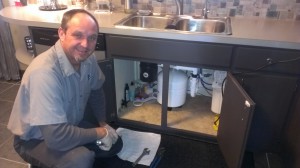Annual Service
 Many Drainworks customers are enrolled in the comprehensive Drainworks plumbing prevention program.
Many Drainworks customers are enrolled in the comprehensive Drainworks plumbing prevention program.
Designed to save money the program is designed to identify and fix or update plumbing components that frequently lead to plumbing problems. In addition the program examines the total efficiency of your plumbing system identifying additional areas that you may be able to save even more money (water heating efficiency, sediment build up, insulation, thermostat control, water saving initiatives, city rebate program).
The Drainworks program covers your total plumbing system that services toilets, sinks, showers, bathtubs laundry facilities, washer, dishwasher, utility sinks, installed drains, exit drains, sewer pipes.
 We follow and check the water system efficiency into through and out of your home.
We follow and check the water system efficiency into through and out of your home.
- Search for signs of leaks in exposed pipes, where pipes run through the walls or the foundation of the house. Signs of a leak include puddles of water and watermarks.
- Search for signs of corrosion. Corrosion of pipes might cause leaks and bad pipe connections if not corrected. An indicator of corrosion can be green stains around brass and copper fittings and on shutoff valves.
- Test water pressure. Water pressure is with the amount of force the water comes out of sink faucets and showerheads. Low water pressure usually are a sign of sediment build up in the faucet or shower head. It may also be a sign of an issue with the normal water line.
- Remove the showerhead to search for any sediment that can have collected in it. This may be a cause of lower the water pressure.
- Check each sink, shower and tub drain for the speed of drainage. Slow drainage usually indicates a clog within the drain or a blocked vent pipe. Your drains should have the full swirl when draining. If bubbles appear when water is draining, this can be a sign of a problem.
- Check the flushing handle and inside parts of the toilets. Flush each toilet to ensure that it is flushing properly. Check the parts inside the tank within the toilet to see if any parts are broken, rusted, or missing. Make sure the toilet water does not continue to run after flushing and ensure there is no sign of water on the floor around the toilet.
- Search for cracked tiles within the shower, around sinks, or near water pipes within the home. Loose or hollow tiles can be an indication that there is, or was, a leak that has caused rotting underneath or behind the tile.
- See if tub, sink or toilet caulking is coming off.
- Check for mildew, which is brought on by standing water which will have dried up again.
- Push and pull on each toilet to determine if it rocks or moves.
- Look inside the burner chamber of the home’s water heater. See if one can find any flakes of rust inside of the chamber. Also, check the flame of the water heater, which should be a blue color with no signs of yellow in the flame. If you see a yellow color, this may mean that the jets need to be cleaned.
- Drain the water heater to remove sediment that can have built up in it.
- Turn on all of the faucets in your home to see if there is any water coming out of the handles and valves.
- Check the washing machine hoses to ensure that there aren’t any cracks and that the hoses aren’t brittle or leaking.
By running through this checklist on an annual or bi- annual basis, it is possible to check your house for plumbing problems or potential plumbing problems. Addressing these problems on a regular basis can help you to prevent the problems from becoming worse, which can save you quite a bit of money heading down the long run.
